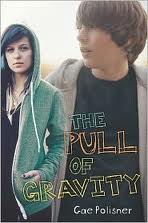Silence, interrogation, confession, chronology, and stories. The Oral History Review (OHR) Volume 41, Issue 1 is now online and coming to mailboxes soon, and along with it Alexander Freund’s article, “Confessing Animals”: Toward a Longue Durée History of the Oral History Interview.” OHR Editorial Board Member Erin Jessee spoke with the University of Winnipeg professor over his novel approach to the oral history interview. Below is a small excerpt from their conversation, with more to come soon.
Erin Jessee: I found your article very provocative (in the best possible way) and am eager to be a part of this dialogue. Perhaps an appropriate starting point for this email exchange would be for you to tell me about the story behind this article.
* * * * *
Alexander Freund: You are right: In the case of this article in particular, it makes sense to start with its genesis.
Ever since I conducted my first oral history interview in 1993, I have been surprised at how forthcoming many people are in telling their stories, including intimate details and “family secrets.” Originally I thought this was the result of my interviewing skills, but I also soon noticed some specific interviewing dynamics that I have found to be increasingly troubling. Silence was one of these dynamics. As interviewers, we remain silent to give our narrators space to reflect, reminisce, recall, and re-organize their memories. But silence makes people uncomfortable and they try to fill it with words. Even though I always told my interviewees to expect silences and not be alarmed by them, there were several instances when people told me information they had not planned on disclosing.
Sometime after 2000, I began to notice larger social phenomena in Canada and the United States that seemed to be shaped by similar dynamics. Storytelling, for example, became a big hype in all kinds of fields, from arts to therapy to business management. (Google ‘storytelling’ and you will be surprised by what you find.) From personal experience in participatory educational programs and documentaries, I saw that many of the group activities were intended to “liberate” participants from anonymity and social restrictions.
A few years ago, coincidence led me to Michel Foucault’s History of Sexuality, Vol. 1. As soon as I hit the chapter “Scientia Sexualis,” all of my thoughts and concerns about interviewing and the storytelling craze of late came together and made sense. It was a real “Aha!” moment! I think every oral historian should read this short passage. I would be surprised if anyone with just a little bit of interviewing experience did not see the “interviewer” in Foucault’s description of the confessor-confessant relationship.

‘Storytelling’ by Jim Pennucci. CC BY 2.0 via pennuja Flickr.
As I write in the article, this is only the beginning of an exploration that our field needs to undertake as a whole. The article raises more questions than it can answer. The question that currently intrigues me the most is the rise of public confession since the end of the Cold War and the rise of the Internet. There seems to be an insatiable desire, not just in the West and not just among the young, to share one’s most intimate experiences and feelings with the world. Much of this is driven by the digital technology and media industries that profit from this new demand for public confession.
But why is it important for oral historians to critically examine and understand this culture?
First, much of this culture draws on the generic term “storytelling” to somehow give it legitimacy and credibility. Oral historians have increasingly begun to use the term storytelling to describe their practice. And vice versa, a great range of storytelling projects and products have described their practices as oral history. There is, no doubt then, the opportunity to conflate all of these different practices of “storytelling.” In the multi-billion dollar market of “storytelling,” however, oral history is bound to come out at the losing end. This is not about excluding people from oral history, but rather to insist on the importance of our best practices.
Second, and this is even more important, we now live in a culture of “digital storytelling” and similar cultural practices. We may think that as oral historians we are worlds apart from the examples above, but except for the higher production values of multi-million dollar outfits like television stations, we use the same tools and technologies: interviews, audio and video recorders, online dissemination platforms like YouTube. Furthermore, we share (or at least appear to share) the underlying assumption that to help people “put it out there” is somehow good.
I am not a defeatist. I simply argue that learning more about the long history of our instruments and methods will help us better understand and appreciate our own accomplishments, continue to be critical of our methods, and enable us to resist the vortex of confessional culture and the storytelling industry. I would be interested to hear how things are playing out in the regions of the world you are familiar with. For example, how does storytelling and other confessional practices figure into the memorialization and commemoration of the genocides you have studied?
* * * * *
Erin Jessee: To be honest, one of the challenges I’ve been having with this exchange is how to talk about some of the experiences I’ve had and encounters I’ve observed as an oral historian in different settings. I’d shifted from forensic archaeology to oral history and anthropology precisely because I became aware of the violence that could be done to communities in the official pursuit of justice – typically defined in relation to Canadian or international criminal law. With few exceptions, it seemed that the needs of communities in the aftermath of mass violence were often subsumed to the need for justice. In the process, tools like forensic exhumations and international criminal trials became yet another form of violence in the everyday lives of these communities.
I’m reminded of a talk I recently attended given by Amy Tooth Murphy at the Scottish Oral History Centre. She was discussing chrononormativity as a source of discomposure in her work with women in the LGBTQ community. In brief, she found that her efforts to adhere to a life history interview format that moved chronologically from past to present created a narrative rupture between the lives these women had lived and the heteronormative society that surrounded them. It also created uncomfortable silences between the heteronormative ideals they adhered to in public and the lesbian relationships they engaged in in private.
I’ve observed similar discomposure in working with genocide survivors in places like Rwanda and Bosnia, where when faced with the option of moving chronologically through their life history people become mute. The prospect of starting their narratives with their childhood experiences – often positively recalled in relation to the mass violence that followed – can be very painful as it reminds them of what has been lost and inevitably sets the stage for a difficult interview experience for the interviewee. Over time, I learned to abandon the chronological interview format and began starting interviews with open-ended questions like “Tell me about yourself” or “Tell me about your life.” Provided with the option of starting their narratives anywhere they chose and working through their experiences in their own terms, people seemed far more comfortable with the interview experience. And while I’d hesitate to say that any catharsis was achieved, the interview experience appeared to be more positive for my interviewees, though it certainly makes the process of analysis, and the creation of narratives that Westerners would recognize as “good storytelling” more complicated.
* * * * *
To be continued…
Alexander Freund is a professor of history and holds the Chair in German-Canadian Studies at the University of Winnipeg, where he is also co-director of the Oral History Centre. He is co-president of the Canadian Oral History Association and co-editor of Oral History Forum d’histoire orale. With Alistair Thomson, he edited Oral History and Photography (New York: Palgrave Macmillan, 2011). He is the author of “Confessing Animals”: Toward a Longue Durée History of the Oral History Interview” (available to read for free for a limited time) in the latest issue of the Oral History Review.
Erin Jessee, in addition to serving on the OHR Editorial Board, is an assistant professor affiliated with the Scottish Oral History Centre (Department of History) at the University of Strathclyde. Her research interests include mass atrocities, nationalized commemoration, spiritual violence, transitional justice, mass grave exhumations, and the ethical and methodological challenges surrounding qualitative fieldwork amid highly politicized research settings. Erin is in the final stages of writing a book manuscript (under consideration with Palgrave MacMillan’s Studies in Oral History series) tentatively titled Negotiating Genocide: The Politics of History in Post-Genocide Rwanda.
The Oral History Review, published by the Oral History Association, is the U.S. journal of record for the theory and practice of oral history. Its primary mission is to explore the nature and significance of oral history and advance understanding of the field among scholars, educators, practitioners, and the general public. Follow them on Twitter at @oralhistreview, like them on Facebook, add them to your circles on Google Plus, follow them on Tumblr, listen to them on Soundcloud, or follow their latest OUPblog posts via email or RSS to preview, learn, connect, discover, and study oral history.
Subscribe to the OUPblog via email or RSS.
Subscribe to only history articles on the OUPblog via email or RSS.
The post ‘Storytelling’ in oral history: an exchange appeared first on OUPblog.




